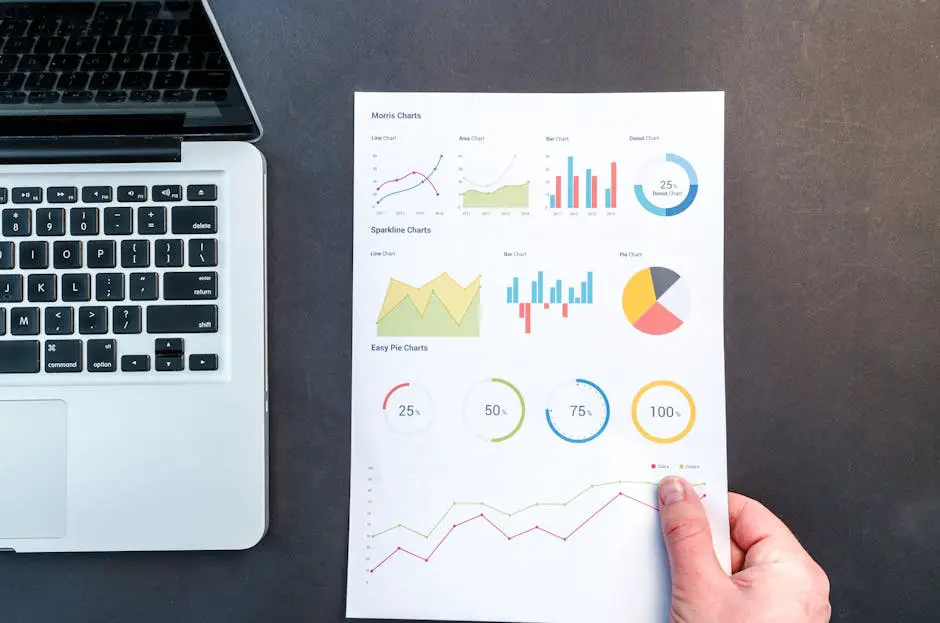1. Keyword Optimization
Begin your journey in blogging by focusing on keyword optimization. Choose keywords that align with your target audience's search queries, focusing on long-tail keywords for better ranking chances and relevance. Use tools like Google's Keyword Planner to gather data on keyword volume and trends.
Incorporate these keywords naturally throughout your titles, headers, and content. Avoid overusing them, as search engines can detect forced insertions. Aim for 1-2 long-tail keywords per post, placed strategically to enhance understanding and SEO without disrupting reader engagement. Consistent, relevant use of keywords combined with engaging content leads to increased viewer retention and improved SEO outcomes.
2. Compelling Content Creation
Creating compelling content involves crafting stories that captivate and resonate with your readership. Consistently provide real value through unique insights, thorough explanations, and practical solutions. Engaged readers are more likely to share your posts and link back to your articles, generating natural backlinks that benefit SEO.
High-quality content elevates your website's authority. Search engines reward posts that receive genuine engagement and external links from reputable sites. Trustworthy and informative posts position you as a thought leader in your niche.
Strike a balance between readability, informativeness, and engagement. Use a tone that reflects your expertise and understanding of the audience's needs. Integrate stories that connect personally with your readers while delivering undiluted value. This approach fortifies your blog's SEO framework and relevance to followers.
3. Utilizing Meta Tags
Meta tags describe your page's content to search engines. The title tag directly affects rankings and user engagement, appearing as a clickable headline in search results. Keep it informative, engaging, and under 60 characters.
The meta description influences whether users click on your article. This brief overview should be under 160 characters, align with the post's content, and use active voice with powerful calls-to-action.
Meta keywords have lost importance due to past overuse and spam. However, they can still serve as a reference for the core topics covered in your post.
Precise meta descriptions and proactive title tags optimize for both search engines and user engagement, guiding potential readers from their initial search to becoming dedicated followers.
4. Mobile Optimization
Mobile optimization is crucial in today's digital landscape. Search engines prioritize mobile-friendly websites, so ensure your blog adjusts seamlessly to fit any device's screen through responsive design. This enhances navigability and user satisfaction.
Speed optimization is also vital for the mobile experience. Implement techniques like:
- Image compression
- Caching solutions
- Code minimization
Use Google's PageSpeed Insights for valuable feedback on enhancing your website's loading speed.
Make interactive elements, such as buttons and links, touch-friendly with adequate space to prevent erroneous clicks. Prioritize content hierarchy, breaking information into digestible parts supported by engaging visuals.
By prioritizing seamless mobile experiences, your blog sets itself up for improved search engine recognition and superior user engagement.

5. Strategic Use of Internal Links
Internal linking guides visitors and search engines through your blog. Link to cornerstone content that provides expansive insights into your specialized topics. Consider the user journey, using intuitive links that lead readers to related content.
Use accurate and descriptive anchor texts to provide clear context about the linked content. This refines user experience and optimizes your site's thematic messaging to search engines.
Update older posts to link to newer content, refreshing existing pages and boosting recognition for newer posts. Be judicious in your linking strategy, avoiding overloading pages with too many links.
Focus on weaving links naturally into high-quality, informative content. Internal links enhance user engagement, site structure clarity, and SEO performance, helping sustain and grow your blog's digital presence.

6. Regular Content Updates
Regular updates to your blog engage returning visitors and signal to search engines that your website is active with relevant content. Revisit older posts to refresh and expand them with the latest information, keeping your content evergreen and practical.
Update content to reposition older posts into the current context, ensuring they remain competitive in search rankings. Share revised posts across social channels to give them fresh visibility and attract new readers.
Search engines favor regularly updated sites when determining credibility and rank.[1]
Align your content with current SEO best practices, optimizing metadata, strengthening internal link structures, and improving readability.
Solicit feedback from readers to guide your updates, making the blog more relevant to your audience's needs. Consistently revised content establishes your blog as a current, credible source of information in your domain, leading to sustained traffic and improved rankings.

7. Optimizing Image Alt Text
An often overlooked yet pivotal aspect of SEO best practices involves optimizing the alt text for images on your blog. Alt text, short for alternative text, plays a critical role not just in enhancing accessibility for visually impaired users utilizing screen readers but also serves as an essential cue to search engines about the context of the images. The attention you pay to alt text can substantially improve both user experience and your blog's visibility in search results.
Alt text provides an opportunity to embed relevant keywords without impacting the natural flow of your written content. It's like captions that provide search engines with a concise explanation of what's displayed visually, helping them index images properly—an action that boosts the overall SEO health of your blog.
The primary function is to describe what's in the image compellingly and accurately. Let's break this down:
- Descriptive and informative: Alt texts should provide enough detail that someone who can't see the image can still understand what it conveys. Descriptive doesn't mean long-winded; concise clarity works best.
- Inclusion of Keywords: Instead of using non-descriptive filenames like "IMG00123.jpeg," rename the image adding relevant keywords that align with your blog's content. For example, if your post discusses advanced home workouts, the alt text could say "Woman performing an advanced yoga pose at home," which enhances relevancy in related searches.
- Not keyword-stuffed: While incorporating keywords is beneficial, keyword stuffing can hurt more than help, as it may lead to penalties from search engines and disrupt user experience for those utilizing screen readers.
- Context is king: Always ensure that the alt text fits within the context of the surrounding content. It should complement the information shared rather than be a disjointed piece crammed in for SEO.
Efficiently optimizing your image alt text adds a layer of detail that enriches the browsing experience—not just for search engines but for actual humans who visit your blog. It reflects the dual benefit of making content accessible while making each image work harder to climb up the SEO ladder.
Remember, even the most attention-grabbing images on your blog miss their full potential without properly crafted alt text. To maximize your blog's expressive and search-engine potential simultaneously, take those extra few seconds to add descriptive, keyword-focused alt text whenever you upload an image. As accessibility and SEO go hand in hand, engaging in such best practices distinguishes your site as carefully maintained and reader-friendly, boosting user experience and search ranking effectively.
8. Building Quality Backlinks
Building quality backlinks is akin to earning a vote of confidence from the Internet's governing bodies — websites that link back to your blog essentially tell search engines, "This content is valuable." Effective backlinking is a robust tactic to elevate your blog's SEO status, enhance its online visibility, and assert its domain authority. Here are some effective strategies for attracting high-quality backlinks to boost your blog's credibility and enhance its position on search engine result pages (SERPs):
- Guest Blogging: Writing articles for other blogs can be a great way to secure potent backlinks. Identify blogs within your niche with authoritative strength and offer to create compelling content that adds value to their readers. In exchange, you'll usually get a backlink either within the article or in an author bio section. This isn't just about getting a link back; it's about reaching new audiences and showing your expertise in subject matter areas.
- Infographics: People love sharing great visuals! Craft informative, visually appealing infographics that summarize complex data that are easy to understand at a glance. These have a high potential for virality on platforms such as Pinterest and Instagram, and they also encourage reposting across various websites, generating backlinks each time they're shared.
- Partnerships and Collaborations: Align with other bloggers or brands for webinars, podcasts, or co-authored posts. Such collaborations are often mutually beneficial, boosting visibility while distributing valuable content. Ensure that in any collaborative content, there's room for backlinked mentions of all parties involved — a win-win for all.
- Resource Links: Create content that serves as a go-to resource. This could be a comprehensive guide, a series of tutorials, or an industry analysis report. The more useful and resourceful your content is, the more likely it is that other industry insiders will reference and link to it naturally.
- 'Linkable Asset' Creation: Consider developing multifaceted content that qualifies as a 'linkable asset'. This could be anything from research papers, surveys, or tools such as calculators or interactive videos. Unique elements like these can generate attention and are resources that people often link back to in their own content.
- Discover Unlinked Mentions: Use tools to monitor mentions of your brand or blog across the web. If you find instances where your site is mentioned without a link, contact the site owner and kindly request them to embed a hyperlink in your mention.
- Digital PR & Press Releases: Use newsworthy events related to your blog or business to issue press releases or engage in other PR activities that attract attention from media outlets and related publications in your sphere. Media coverage is excellent for publicity and often secures high-quality backlinks too.
- Active Participation in Online Communities: Engage genuinely in forums, comment sections on relevant blogs, and professional groups on platforms like LinkedIn. By contributing valuable advice and knowledge, you can establish peer recognition which sometimes lends opportunities for backlinks when cited as a source of information.
Executing these strategies effectively requires effort and persistence but can improve your blog's reach, domain authority, and SEO position. Remember, the essence of building backlinks lies in the value you provide – be it through groundbreaking visuals, innovative insights, or indispensable facts and figures. Keep focused on creating content that others find beneficial and link-worthy, and backlinks will follow.
9. Site Speed Optimization
As the digital landscape becomes more competitive, fine-tuning the speed of your website is a pivotal facet not just of user satisfaction but of your SEO strategy as well. The quicker your pages load, the better your site stands in the estimations of both your visitors and search engines.
Site speed influences user experience, directly affects bounce rates, and impacts rankings in search results. With users typically allowing mere seconds for a page to convince them to stay, optimizing for speed can dramatically improve the likelihood of engaging a visitor long enough to convert them into a follower, subscriber, or customer.
Emphasis on speed optimization signals to search engines like Google that your site provides a good user experience, an aspect search engines then use as a ranking criterion amidst numerous other factors.
To give your pages a speed boost, consider these actionable steps:
- Prioritize Compression and Optimization of Images: Images are often the largest culprits in slowing down websites. Opt for formats like JPEG for high-quality images and PNG for graphics with fewer than 16 colors. Tools like Adobe Photoshop or free online services like TinyPNG and ImageOptim can significantly reduce file sizes without perceptible loss to quality.
- Minimize and Merge Code: Streamline your site's code by minifying CSS, JavaScript, and HTML. This involves removing unnecessary spaces, commas, and other characters, alongside code comments and formatting. Tools such as UglifyJS or cssminifier can help with this. If possible, merge multiple scripts into a single script and similarly combine all CSS into a single stylesheet. This reduces the number of HTTP requests required to load the page.
- Utilize Browser Caching: When you enable caching, you allow visitors' browsers to store copies of your site's pages temporarily. This means that subsequent pages load faster because the browser does not need to send another HTTP request to the server to retrieve this information again. You can set this up by altering the cache-control headers in the HTTP header.
- Implement Asynchronous Loading for CSS and JavaScript: Modifying the way your CSS and JavaScript files are loaded can help speed up your pages. By enabling asynchronous loading, you can allow multiple files to load simultaneously without waiting for one to complete before starting another, helping speed up the interaction ready time of the page.
- Choose the Right Hosting Solution: Your choice of web host plays a significant role in your site's performance. Not all hosting providers or plans are created equal — sometimes it's worth paying a bit more for a hosting provider that provides more bandwidth, better hardware, and enhanced support.
By giving priority to site speed optimization in your SEO strategy, you not only enhance user engagement but also strengthen your site's standing on search engine result pages. Optimization is an essential element of modern web maintenance and digital marketing best practices.
10. User Experience (UX) Enhancement
User Experience (UX) Enhancement is a vital facet of SEO that operates somewhat beneath the surface, yet significantly influences the visibility and efficacy of your blog. An intuitively designed user experience offers a seamless interaction that can markedly enhance how visitors perceive and engage with your site. Here's how a thoughtful approach to UX design could drive better SEO outcomes, fostering longer visits, reduced bounce rates, and cumulatively, superior search engine rankings.
1. Clarity in Design Equals Clarity in Purpose
A well-structured site layout intuitively guides your visitors through the content, simplifying their journey from entry point to the desired conversion action. Streamlining navigation with clear, jargon-free labeling and logical pathways reduces confusion and helps users find information faster. This ease of navigation often translates into longer visits and more page views per session, which search engines interpret as signals of a site's value, thus improving your SEO score.
2. Speed Is Part of UX
The overlap of site speed with user experience is undeniable. As pages load faster, users are less likely to abandon them, thus decreasing your bounce rate. Implementation of accelerated mobile pages (AMP) and optimizing image sizes and server response times are direct enhancers of UX that also play significant roles in SEO.
3. Responsive Design Is Mandatory
In an era marked by an array of devices — each with different screen sizes and interaction models — responsive design ensures that your blog looks and works perfectly across all platforms. A responsive website also consolidates your content onto a single URL, which is vital for sharing and linking, aspects that significantly benefit SEO.
4. Readable Content Retains Readers
The legibility of your content impacts how long visitors stay on your pages. Good UX design incorporates readable fonts, appropriate text sizes, sufficient contrast, and spacing to make content consumption comfortable on any device. Coupled with engaging, well-written content, these elements keep users on-page longer, decreasing bounce rates, and signaling content value to search engines.
5. Interactive Elements Boost Engagement
Interactive UX elements such as buttons, link hover effects, and small animations can substantially enhance user engagement. However, these should be used judiciously to ensure they do not detract from the overall usability or overwhelm the core content. Properly utilized, interactive elements can turn a static visit into an engaging experience that encourages users to linger and explore further.
6. Feedback Mechanisms Enhance Usability
Incorporating feedback mechanisms like comment sections, reaction buttons, or quick surveys can directly affect your blog's UX by making users feel valued and heard. Enhanced user interaction through these channels can provide insights into user preferences and content performance, indirectly boosting SEO as you adapt to meet user needs more effectively.
7. Consistency Builds Familiarity
Consistent use of colors, design layouts, and styles across your website not only strengthens your brand identity but also reduces the cognitive load for users. Familiar interfaces are easier to navigate and interact with, which can decrease bounce rates and improve overall site performance metrics that impact SEO.
8. Accessible Design Reaches Wider Audiences
UX that prioritizes accessibility reaches a broader audience and ensures compliance with web standards and ethical practices, widening your potential user base. Alt text for images, adequate color contrast, and text-to-speech compatibility are key for reaching users with varying abilities, making your site more inclusive and boosting your potential SEO as a result.
9. Error Handling Improves Experience
How your site handles errors can make or break the user experience. Strategically designed error pages that guide users back to useful resources or previously viewed pages can significantly boost engagement rates. Properly managing 404 errors ensures that users stay on your site even when they stray off the intended path.
10. Anticipatory Design Influences Visitor Actions
Using anticipatory design principles can subtly guide your users towards desired actions. Predictive user interfaces that suggest next articles to read based on previously viewed content can greatly increase the session duration and depth of interaction. These predictions, when accurately aligned with user interests, enhance the UX and increase perceived site relevance, which is favorable for SEO.
Integrating UX into your SEO strategy encompasses much more than just visual design—it's about creating an environment that fosters organic interaction and satisfies users' needs efficiently. By enhancing your website's UX, you aim to meet the immediate needs of your visitors and shape a digital pathway that organically boosts your SEO through positive user behaviors. Remember, a happy user is your best advocate in the ranks run by search engines.
